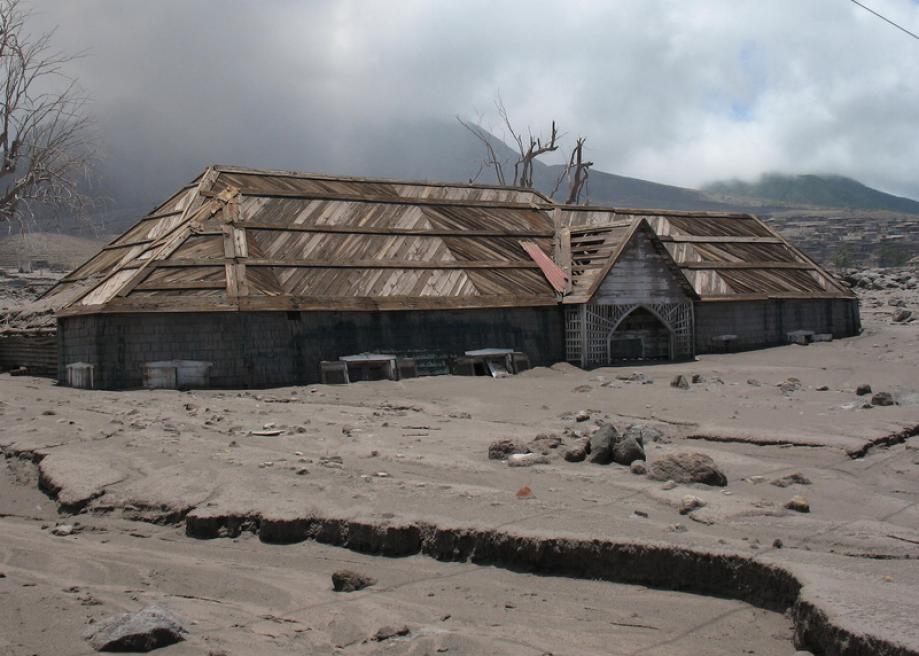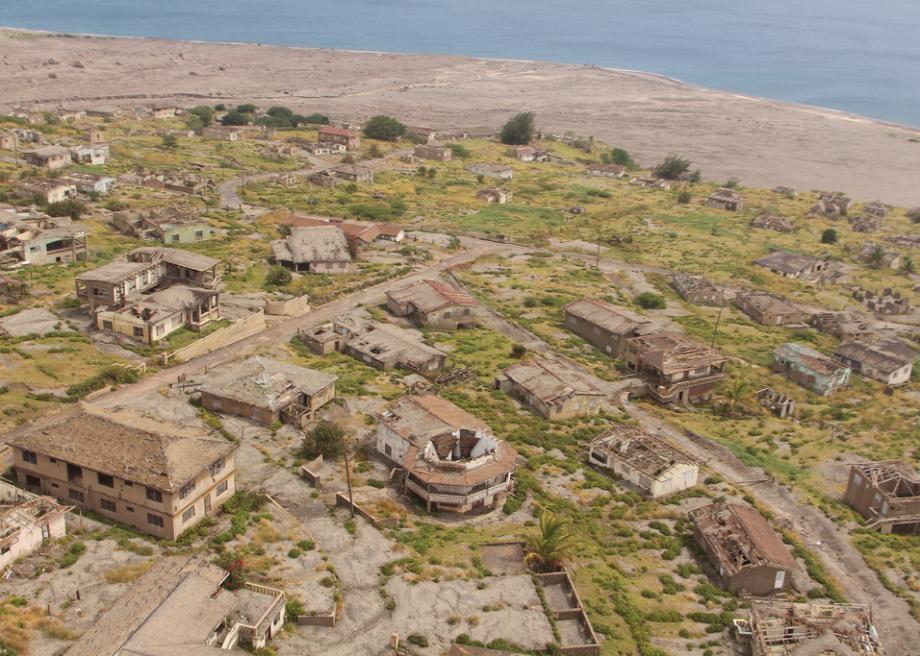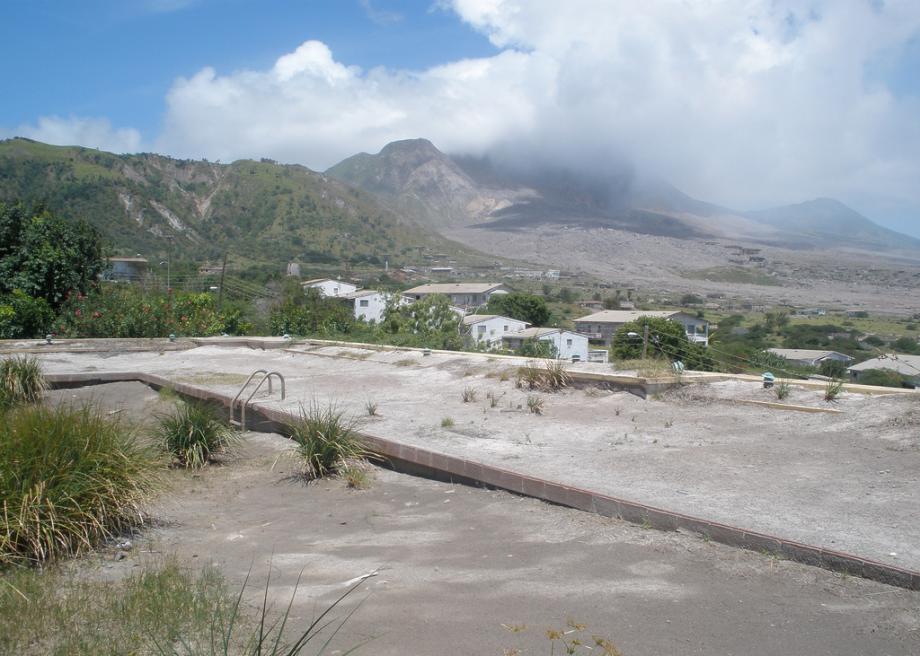The Caribbean Island That's Half Paradise, Half Mud-Drowned Wasteland
Atlas Obscura on Slate is a new travel blog. Like us on Facebook, Tumblr, or follow us on Twitter @atlasobscura.
On February 11, 2010, vacationers flying from Toronto to St. Lucia on a Boeing 737 heard the pilot make an unexpected announcement: "Ladies and gentlemen, if you look to the left of the plane, you'll see a volcano erupting."
The volcano that was indeed hurling a plume of ash into the sky was the Soufrière Hills volcano on the Caribbean island of Montserrat. It was a fantastic sight, but not an uncommon one. Soufrière Hills began to erupt in 1995 -- for the first time since the 17th century -- sending lava flows and ash falls over the 10-mile-long island. The affected areas were evacuated and no one was killed. However, just two years later, the volcano went off again, this time killing 19 resettled people. Continuing eruptions destroyed the capital city of Plymouth and covered the entire southern half of the island in a thick layer of ash.
The south side of the island was declared uninhabitable and remains an exclusion zone. Over half of Montserrat's 12,000 residents never returned after being evacuated. Those that have stayed live on the north side of the island and have grown accustomed to the ongoing eruptions at Soufrière Hills. The island's economy is even benefiting from volcano-focused tourism, such as helicopter flights over devastated Plymouth and boat rides offering views of the smoking mound.
Volcanic activities:
View Plymouth in a larger map



